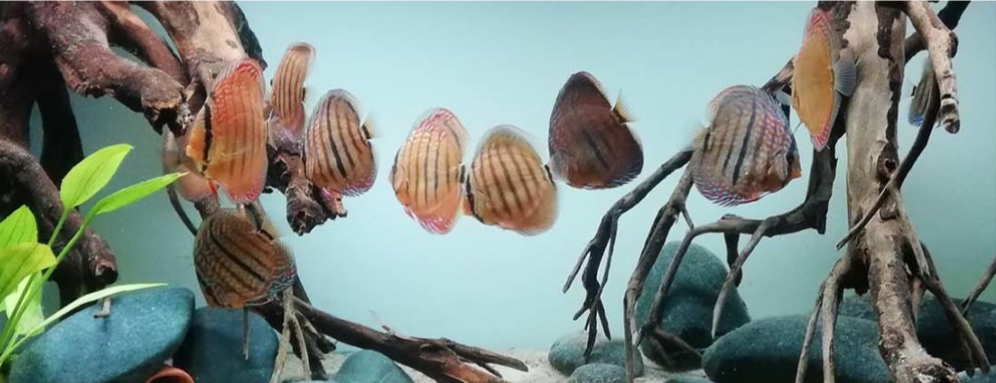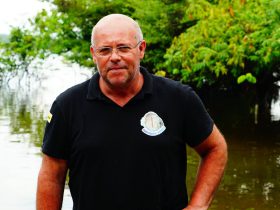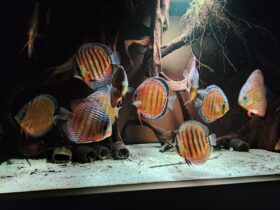How I write before one or two year before about this whirling disease i shared my experience with mr.Thraen and he also include his products in this research.
UDO THRAEN from DISCUSFOOD write this article which will help a lot of discus lovers around the globe.
Hello dear discus friends, today I would like to inform you about an observation of our friend Mario Bogdan, which he has made himself, but also with acquaintances. For some years now there has been an increasingly frequent disease in the discus scene, which mainly affects wild-caught fish, the so-called Crazy Discus Disease or also called the Whirling Discus Effect. I was first made aware of this by discus friends from Sweden and England. But we soon heard the same symptoms from China, Malaysia and the Balkans. So it is a worldwide phenomenon? We at Discusfood were faced with a mystery, because we could only see the symptoms on video, plus there were probably many discus lovers who did not share this, so there was probably a huge grey area here. Even if we got information, the fish were just too far away to be able to examine or observe them. If they had been shipped, they would never have reached us alive. Many discus specialists were baffled. When this phenomenon occurred again, Mario did not try antibiotics and other medicines, but used Discusfood minerals in a dosage three times higher than the instructions. The fish shot through the tank like crazy, it lasted about 40 to 60 seconds, then the fish was calm for 3 to 4 hours, then it started all over again. After the dosage, the time of craziness became shorter and shorter and after a few hours it was over. Okay, that was a fish, was that a coincidence? A short time later, a second one contacted Mario and Mario recommended Discusfood Minerals to him and he too was able to save his precious wild-caught discus. That made two who were able to save the lives of discus fish in this way. But that was not enough for Mario, because this phenomenon was unpredictable, it did not always occur, the fish also came from different importers or wholesalers, but what connected the discus fish other than that they came from South America? After a few conversations Mario had a suspicion, he searched in old literature for this disease and its triggers, and he found something similar, there was something about magnesium deficiency and the use of salt as a remedy, but most had used osmosis water and removed the salts to give the wild caught fish a microsiemens poor water. So why harden the water with salt? But Discusfood Minerals does not contain sodium and therefore does not harden the water, it is minerals and trace elements. So what most of them have in common is that they have tried to offer the animals a species-appropriate water, as it occurs in the Amazon and its tributaries, so that all of them, whether by osmosis or by softening filters and resins, have produced water that is low in microsiemens. Was this already the common ground? Was this low mineral water the trigger?
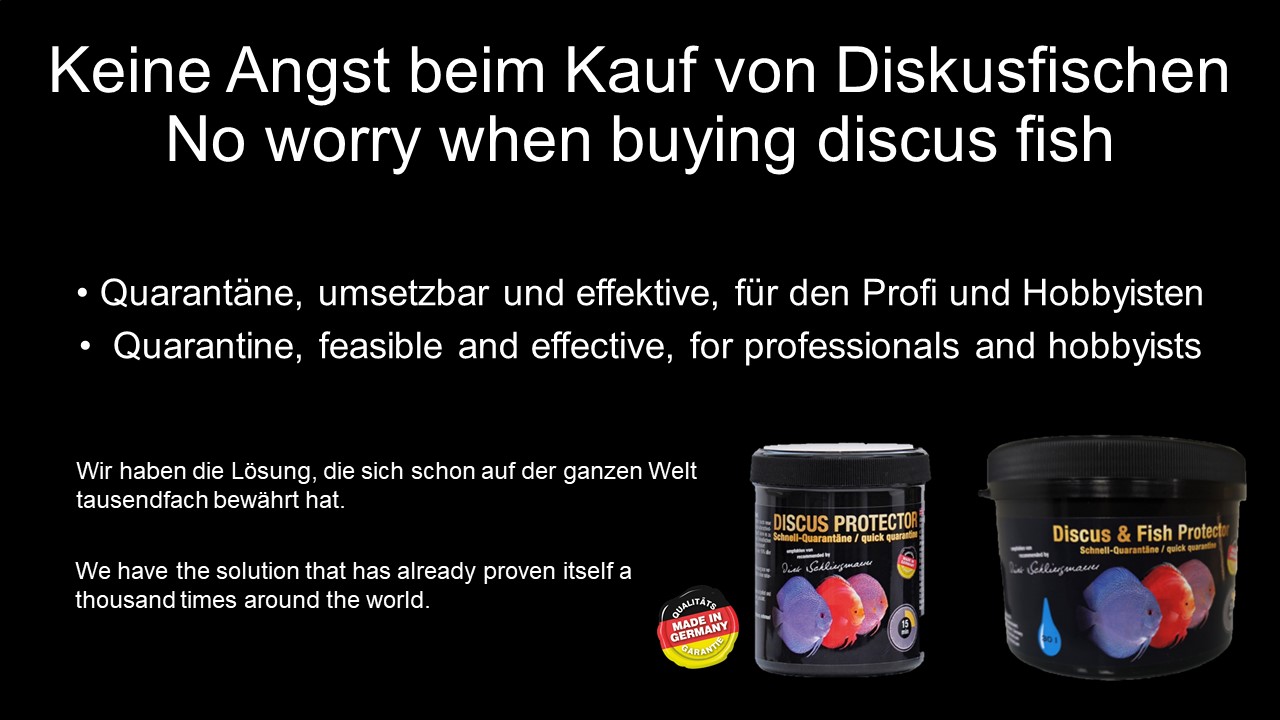
I describe in second part how I shared Mario’s observations with some friends around the world to substantiate them, as these phenomena did not occur regularly. I received feedback from my friend in China who told me that these illnesses, called Crazy Discus in China, are also common in China. But even in China, only very few people came forward and so it took until someone in his immediate vicinity came forward. He got in the car and drove to Guangzhou to a discus lover and they immediately gave the triple dose of Discusfood minerals and after a short time it got better and about 24 hours later the symptomes had disappeared. Again, what Mario Bogdan had observed before had worked. Again, thanks to Mario, beautiful discus fish could be saved. Here too, of course, we paid attention to the water values, pure osmosis water was used, mixed with about 5% tap water. When I went to the fish market in Guangzhou again on a trip to China, I noticed wild-caught discus fish at some of the stalls, the quality was mediocre and the animals were emaciated and obviously not feeling well, unfortunately there was only one saleswoman there who couldn’t answer any questions except for the price, I should come back later, then the boss would be there who could answer my questions. So I strolled around the biggest ornamental fish market in the world in Guangzhou, because there is always something to see here. When I was in front of the shop again, the boss was there, in his shop were various wild-caught discus fish, blues, browns and heckles, but also a lot of Altum angelfish. There are only a handful of such shops on the fish market, as they mainly sell Asian offspring. As is the way with discus lovers, we quickly got talking. No, he has no problems in the shop at the fish market, although the not so great discus are here, he has the top animals at home in his import farm. In the shop he uses normal tap water, the fish can be kept well in it for a short time, but you can see it on the animals, they don’t feel well in normal tap water with a PH of 7.5 and very high hardness levels and let’s say they survive in such water, it’s just a long suffering. While he treats the water at home with osmosis water, where he experiences the same symptoms of the Crazy Discus, he has unfortunately already lost some valuable animals as a result. We shared our observations with him, as well as Mario’s, and so he received minerals from us. He told us that he would receive a new import and wanted to prepare two tanks directly with triple doses of minerals and prepare two tanks as usual without additives. I asked him to prepare the two tanks with minerals, to treat the discus with Discus protector beforehand, which he did, and to add Discusfood Humin to the water after one day. The result was unbelievable.
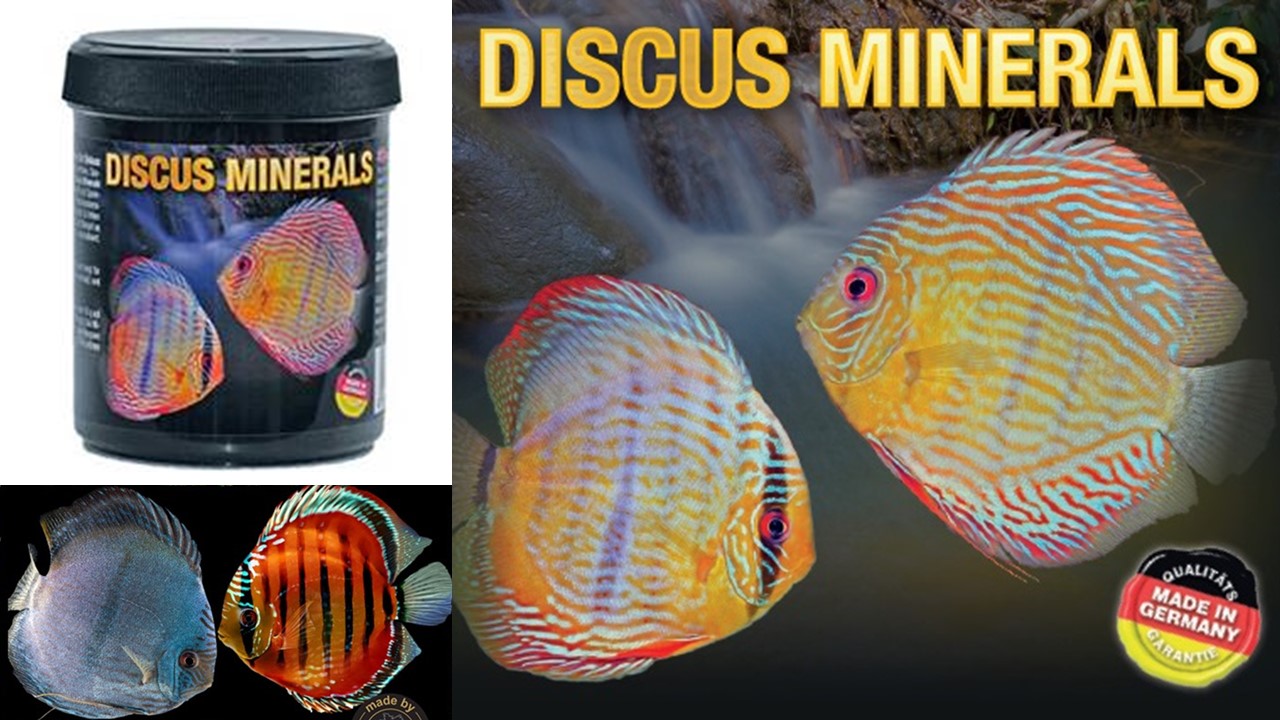
Final part of our report about this disease, which is also called “crazy discus” or “rotating discus”. As described in the second part, my friend got his wild catches in China. Arriving in Hong Kong, continuing to Guangzhou, finally arriving, they had a long journey and many hours of transportation behind them. When the boxes were in his fish room, he distributed them among four aquariums, two aquariums in which he treated the discus as usual, and two tanks with humin and triple-dosed discus minerals. Before he put the fish in the tank, he treated them with the Discus Protector rapid quarantine bath. The first 8 of a total of 24 discus fish went into the 30 liter bath and after 15 minutes into the prepared aquariums. He repeated this twice more until all 24 animals had gone through the quarantine bath. The other two aquariums were filled with discus by his employees without a discus protector. Since it was already finished, the lights were turned off so that the wild discus could recover. The discus fish from the Discus Protector quarantine bath were now all in the tank, which of course took longer than with the discus without quarantine. Lights off in all pools because some animals were lying flat on the floor and you didn’t want them to get scared and swim against the windows. In the morning he was very excited and couldn’t wait to see the animals. Open the door and then he looked at the tanks with the discus fish, which were being treated as usual. They stood somewhat anxiously in the background and repeatedly rubbed themselves jerkily against the window. It looked like they had something on their skin. Then the Discus, which were treated for the first time with Discus Protector, minerals and humin, a difference like night and day.
The animals were much more active and much more colorful. He was so excited that he immediately called me over the Internet, without thinking that he was 7 hours ahead of me because of the time difference, so I got the call at 2 a.m. He said that if he hadn’t seen it with his own eyes, he wouldn’t have believed it. The animals stood like one after the hardships. He wanted to treat the pools that had not yet been treated within 12 hours at the latest and also convert the discus into a pool with minerals and humin. I asked him to delay this a bit to observe the differences longer, but then the Crazy Discus phenomenon occurred in the two untreated tanks. After about 12-16 hours, three discus started going crazy, shooting around the pool and spinning around on themselves. He immediately placed her in a small quarantine tank and immediately treated her with three times the dose of Discus Minerals as instructed by Mario Bogdan. After a short time the discus calmed down and after about 18 hours it was over. Now he didn’t want to wait any longer and pulled all the remaining discus fish through the Discus Protector rapid quarantine bath and put them in a new aquarium with discus minerals and humin. He is sure that Mario Bogdan’s observations are correct, that the minerals have such a positive effect on the fish that the disease does not break out and that the discus feel so comfortable in connection with the humin that they immediately show their full color spectrum. Now all wild caught animals are treated without medication, such as antibiotics, and the Crazy Discus phenomenon no longer occurs with him. Mario Bogdan’s observation has been confirmed several times. If you also have a case of crazy discus, let us know. Keeping wild-caught discus healthy is not an easy task as they require more intensive care than captive-bred ones, as water and food play an essential role in the care of our favorites.
